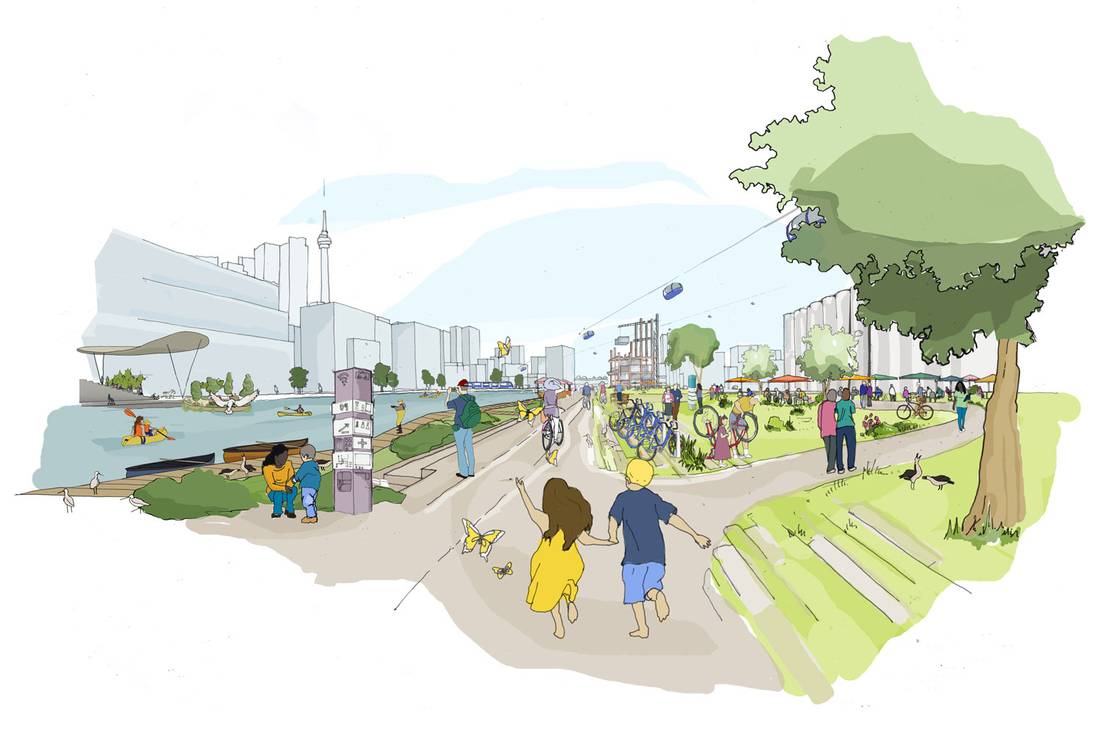
What is Sidewalk Toronto?
Sidewalk Toronto is a collaboration between Alphabet’s Sidewalk Labs and Waterfront Toronto to create a new, mixed-use, high-tech community on Toronto’s Eastern Waterfront.
The project will start with the creation of Quayside, a brand new 12-acre neighborhood just southeast of downtown Toronto.
The state-of-the-art community will serve as a test bed for emerging technologies like self-driving vehicles, AI cameras, street sensors, and wooden skyscrapers.

Sidewalk Labs is initially investing $50 million USD on a year-long planning and public consultation process.
This process will result in the Master Innovation Development Plan, laying the groundwork for the creation of Quayside.
After Quayside, the next phase of Sidewalk Toronto is to develop another 800-acres of the Eastern Waterfront.
6 Ways Quayside Will Revolutionize Cities:
1. Self-Driving Vehicles
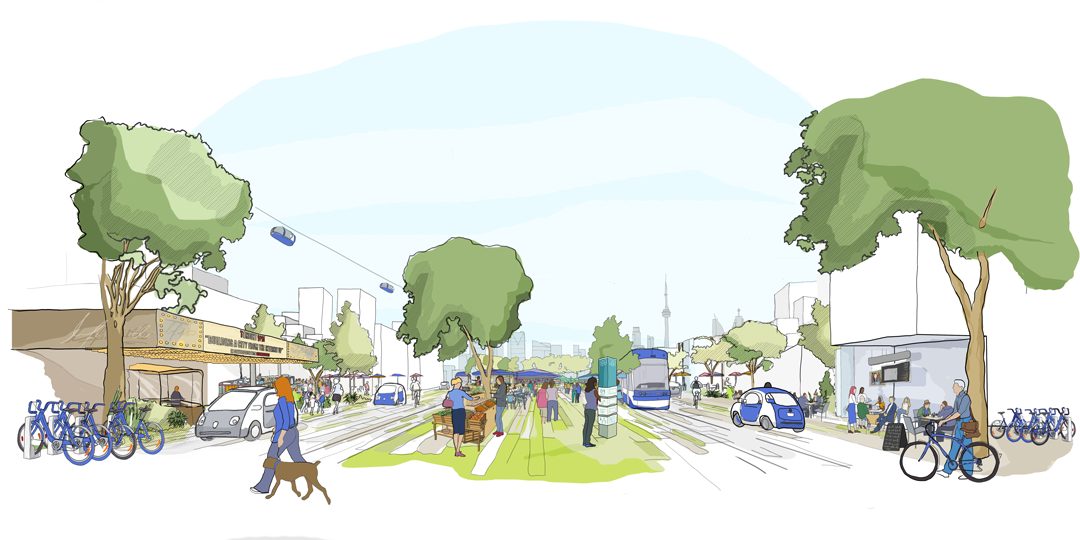
Privately owned cars will be banned at Quayside. Instead, the neighborhood will use autonomous vehicles and public transit.
Not only are self-driving vehicles safer (due to less human error), but they are also cheaper and more convenient.
Furthermore, less traffic means less congestion, fewer accidents, and more room for people, transit, parks, etc
2. New Construction Materials and Methods
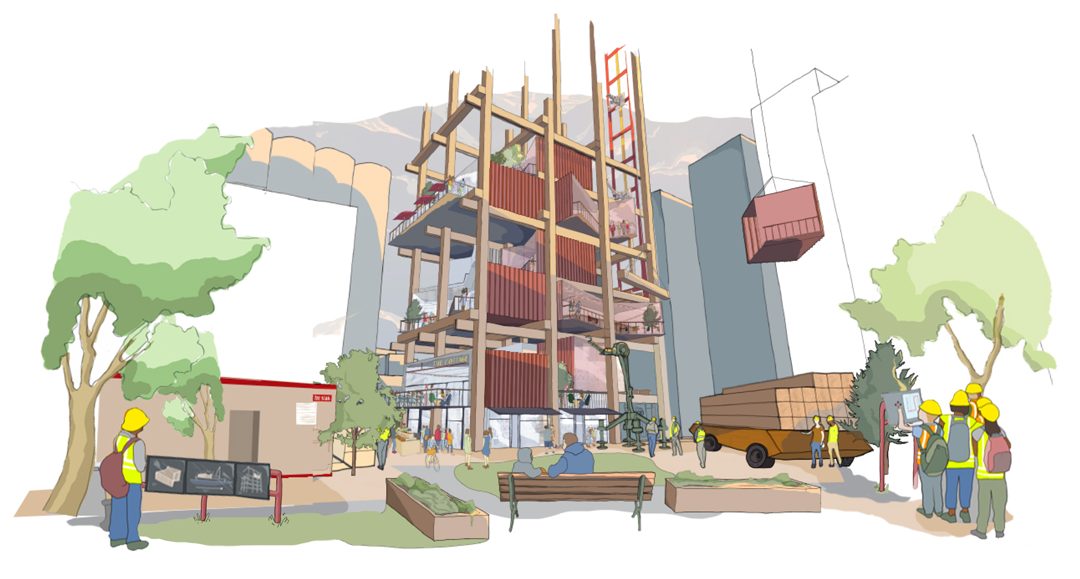
Housing and real estate at Quayside will combine retail, residential and office spaces into one.
These radical mixed-use buildings will be designed using new construction methods and materials.
For example, Sidewalk Labs will use a process known as “modular construction.”
In modular construction, sections of a building are made in a factory, shipped, then assembled on-site.

Not only does this cut down on construction time, it’s also less wasteful and more environmentally friendly.
Just as exciting is Sidewalk Labs’ use of specially treated wood for skyscrapers. These “timber towers” are strong, easy-to-build, sustainable, and affordable.
3. Smart Streets
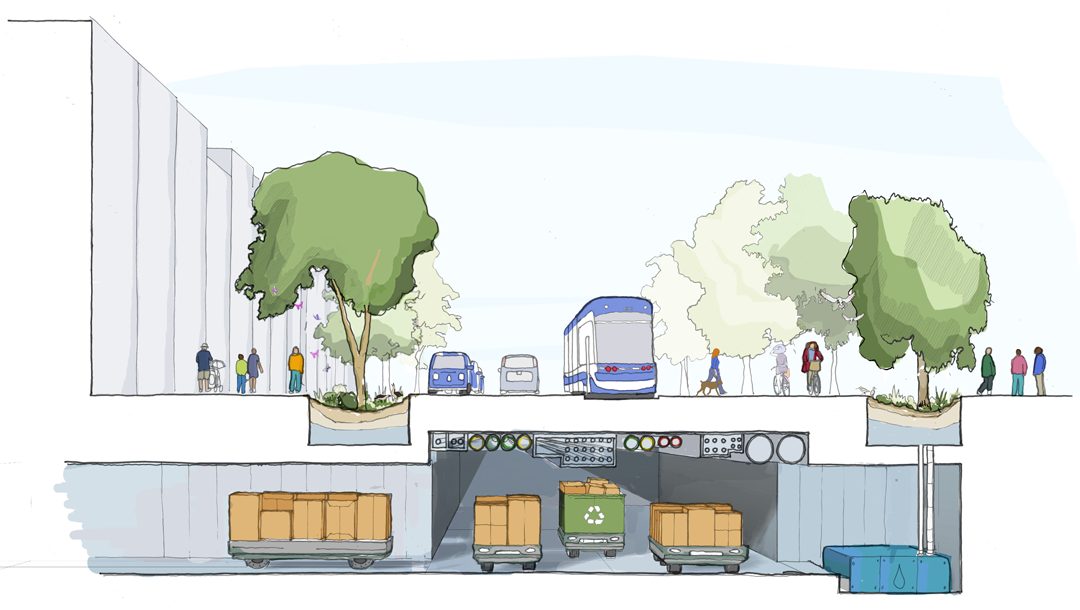
Sidewalk Labs is experimenting with something it calls “The Dynamic Street.”
The goal is make streets more accessible, adaptable, easier to maintain, and environmentally friendly.
For example, The Dynamic Street uses hexagon-shaped “pavers” rather than concrete slabs.
These pavers can be removed and replaced within hours or minutes, thus cutting down on road closures due to construction.
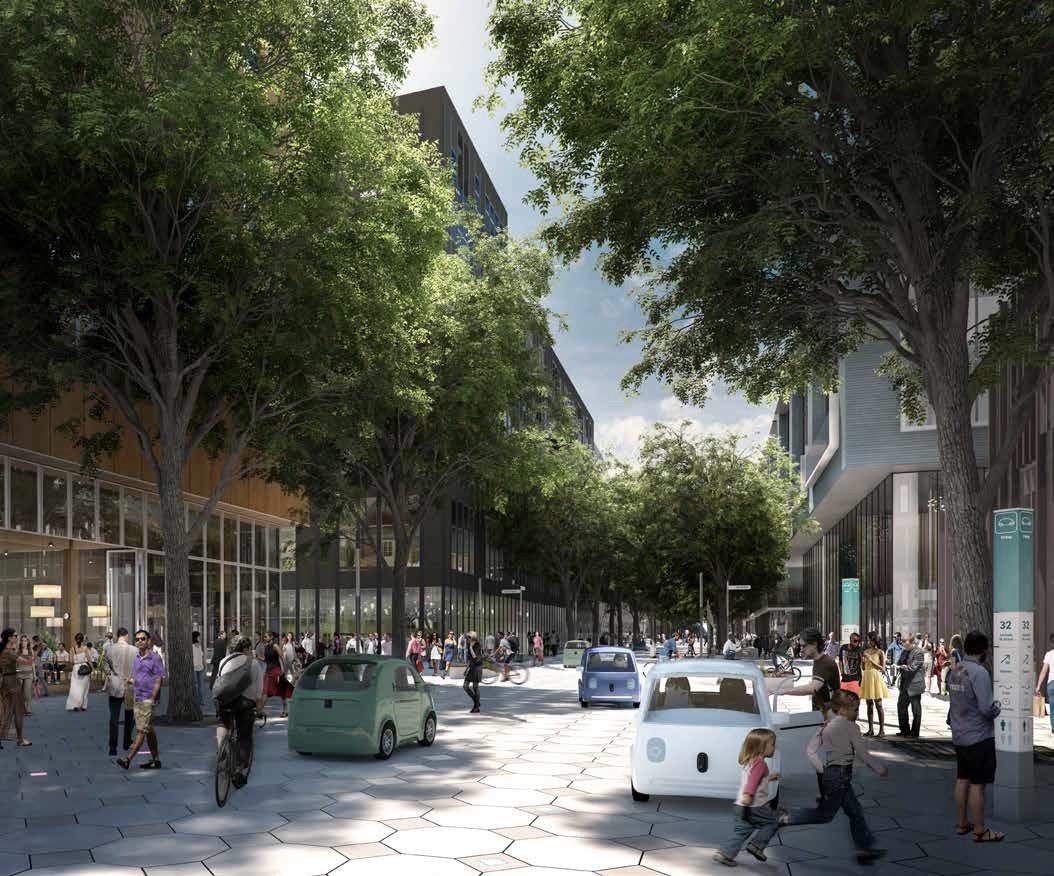
They also distribute weight more evenly than square or rectangular shapes, so they’re less likely to break down.
Another possibility is the use of “light pavers.”
These light pavers use illumination to guide traffic, help street crossings, and designate areas for specific purposes.
4. Sustainable Infrastructure
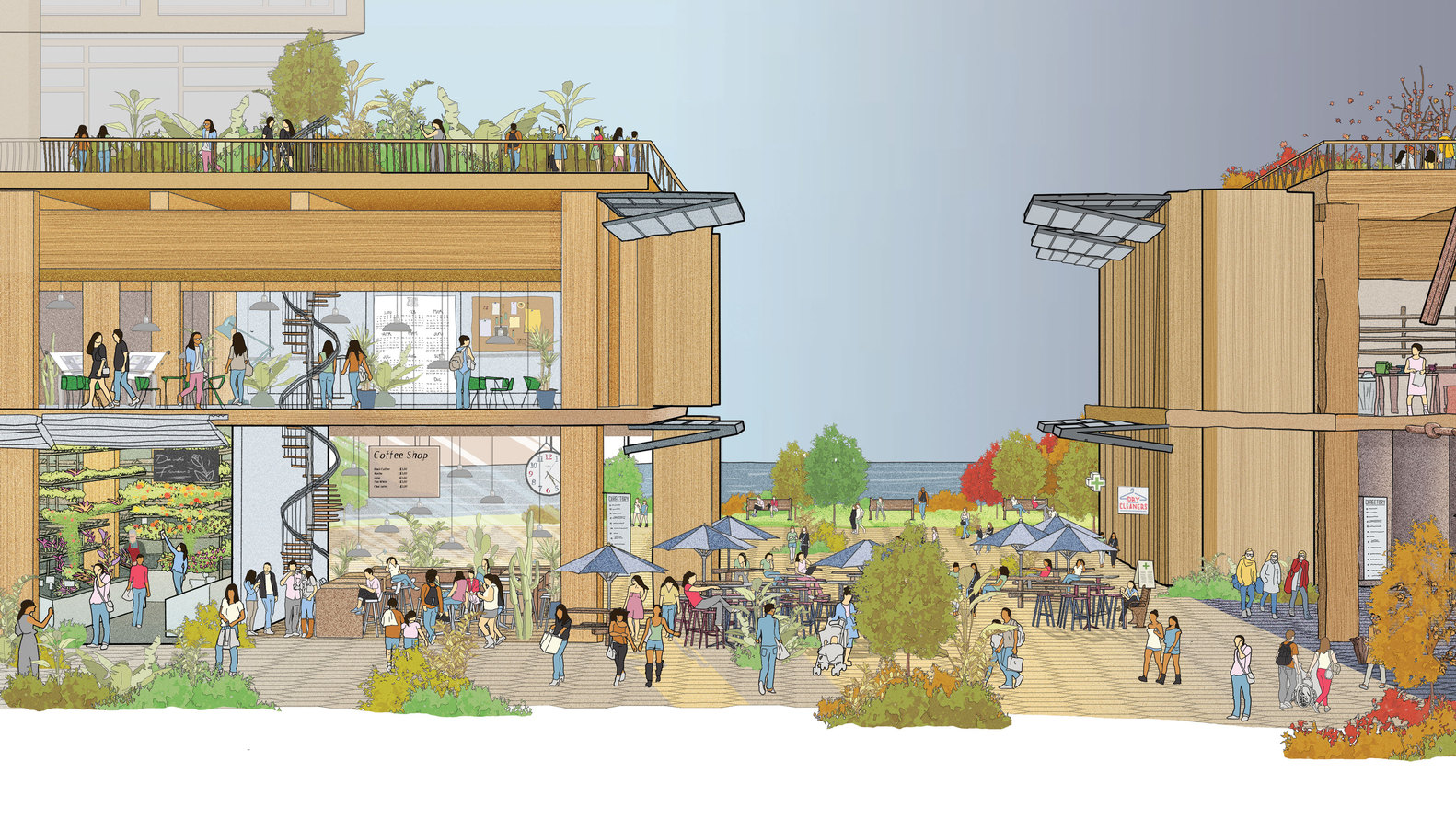
One of the goals of Quayside is to create a “climate positive” neighborhood. It plans to do this by using technology and infrastructure which requires less energy and produces less waste.
For example, the use of “tall timber” as a construction material has many environmental benefits:
- It’s lighter than steel or concrete, and therefore faster to transport
- Concrete has to be poured on-site, whereas tall timber is shipped ready-to-use (thus reducing construction time)
- Steel and concrete requires burning fossil fuels; tall timber actually removes carbon dioxide from the air
5. Digital Infrastructure & Connectivity
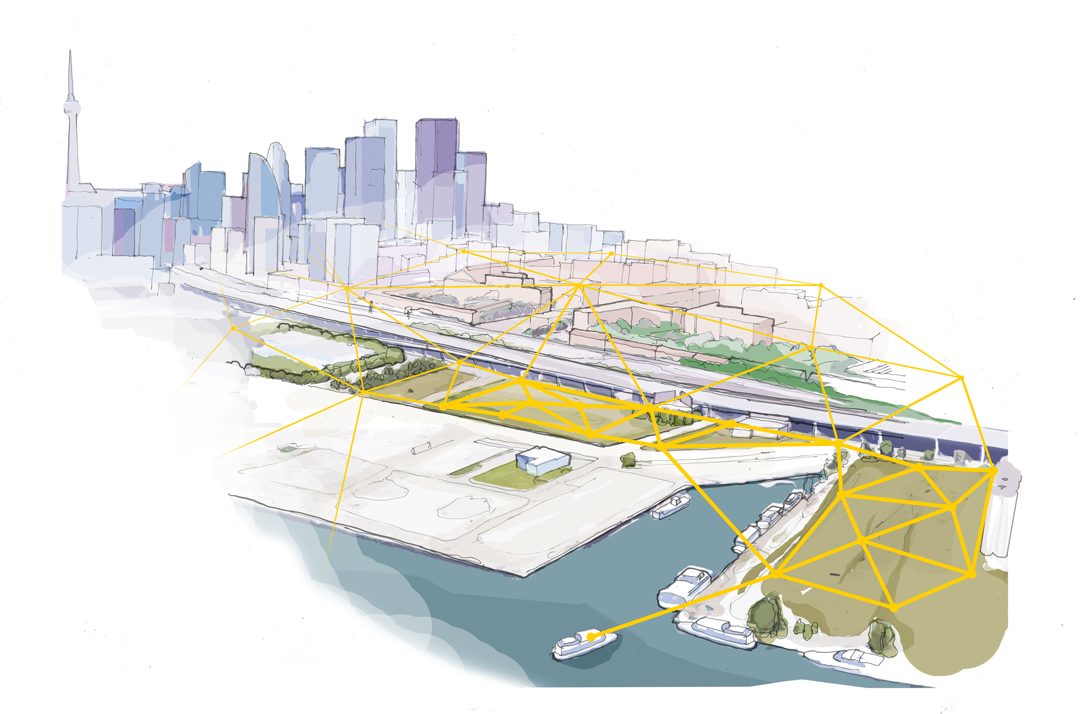
According to Sidewalk Labs, the core of the future city lies in its “layer of digital infrastructure that provides ubiquitous connectivity for all.”
This digital infrastructure will offer insights on the city and encourage citizens to work together to solve local issues.
Quayside’s digital infrastructure highlights include:
- Sensors that monitor air quality, noise level, electricity and water use and also guide their operations
- AI cameras that can track cars, pedestrians and cyclists, adjusting traffic signals for greater safety and flow
- Real-time transit data to cut wait times, reduce commutes, and increase use of public transportation
6. People-First Approach
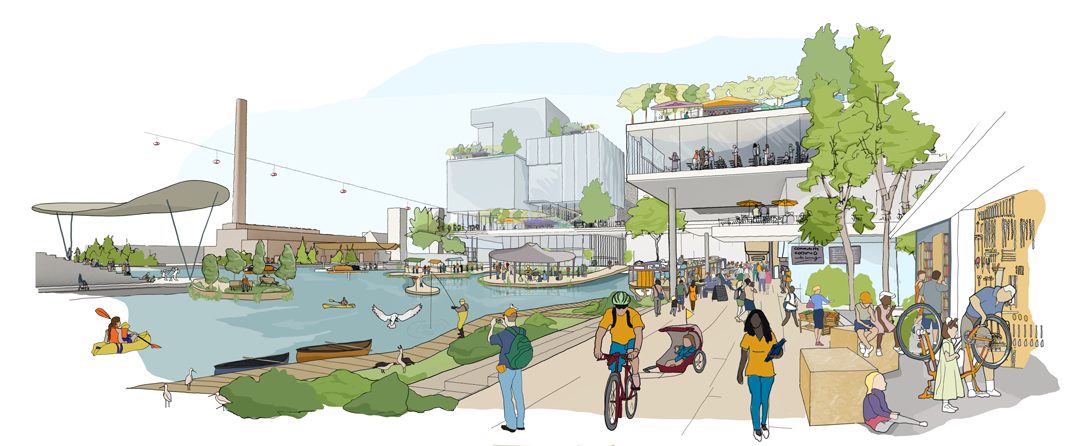
Despite its emphasis on technology, Quayside’s focus is on creating social connections and close-knit communities.
According to Sidewalk Labs:
By combining people-centered urban design with cutting-edge technology, we can achieve new standards of sustainability, affordability, mobility, and economic opportunity.
Quayside plans to do this by:
- Reclaiming streets for public use by prioritizing pedestrians and cyclists over cars
- Lowering the cost of housing by applying new building methods and materials
- Developing apps like Park Time to encourage families to use green spaces and form social connections
- Doubling the time people spend outside through weather-proofing buildings and public spaces
- Improving mobility for seniors, children and the disabled through better infrastructure
Conclusion
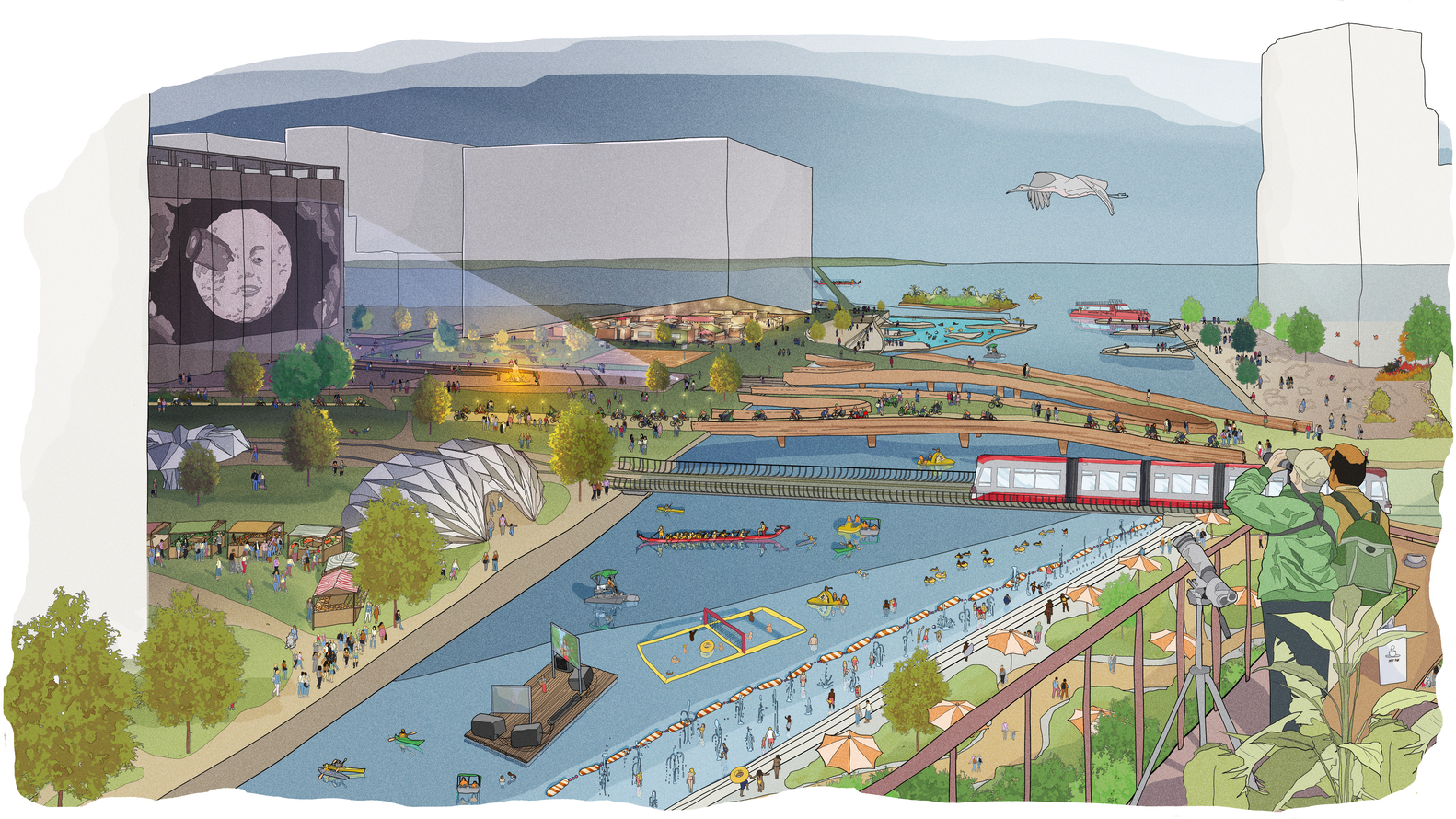
The future of Smart Cities is right here in Toronto.
Google’s Sidewalk Labs is reimagining how we live, work, commute and play.
While the technologies and ideas that power Quayside are impressive, the ultimate goal is to create a “public realm that puts people first.”
Want to learn more about Sidewalk Toronto and Quayside? Contact me below for more details.

